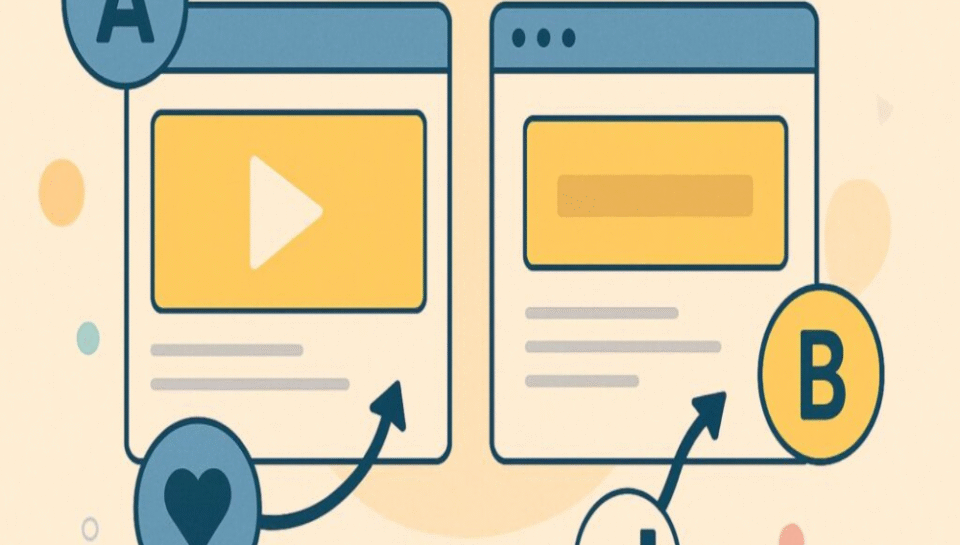
Establish rules for A/B testing in online advertising
Introduction
A/B testing, also known as split testing, is a foundational practice in online advertising that compares two versions of an ad to determine which performs better. This scientific approach removes guesswork and enables marketers to make data-driven decisions. By testing headlines, visuals, calls-to-action, targeting, and placements, advertisers can fine-tune their strategy for higher conversions and ROI. However, effective A/B testing requires structure, discipline, and clear rules to produce reliable insights. When done correctly, it reveals not only what works—but why it works—allowing for continuous optimization in fast-paced digital environments.
Test one variable at a time
To ensure clarity in results, it’s essential to test only one variable per A/B test. Whether it’s the headline, image, CTA, or audience segment, isolating a single element ensures that performance changes can be accurately attributed. Testing multiple variables at once (known as multivariate testing) can be useful later, but for clean, actionable results, A/B testing should stick to a single change between version A and version B.
Define clear goals and metrics
Before launching an A/B test, establish a specific goal and identify the key performance indicators (KPIs) you’ll use to measure success. Common goals include increasing click-through rate (CTR), lowering cost-per-click (CPC), or improving conversion rate (CVR). Clear goals ensure that you can objectively assess performance and avoid bias. Without a defined objective, results can become ambiguous or misleading.
Segment your audience evenly
To produce accurate and unbiased results, divide your test audience into two equal and random segments. This prevents any pre-existing differences between user groups from skewing the outcome. Most ad platforms like Google Ads, Meta Ads, and LinkedIn automatically randomize ad delivery in A/B experiments to ensure fairness. Manual segmentation should be avoided unless managed with precision.
Run the test for a sufficient duration
A/B tests need enough time and impressions to reach statistical significance. Running a test too briefly can lead to inconclusive or misleading results. Ideally, tests should run for at least one to two weeks, depending on traffic volume. Let the data stabilize before drawing conclusions. Tools like Google Optimize and VWO can help calculate the necessary sample size to reach valid conclusions.
Maintain consistent budgets and settings
Consistency is key to a fair comparison. Ensure that both test variants are running under identical budget allocations, bidding strategies, ad placements, and targeting criteria. Any variation in these settings can introduce confounding variables that undermine the validity of the test. Equal conditions allow the tested element—such as a headline or creative—to be the only factor influencing performance.
Monitor performance in real time but don’t end tests early
It’s tempting to stop a test early when one variant appears to be outperforming the other. However, early performance spikes often flatten or reverse with time. Allow the test to run its full course to eliminate the impact of random fluctuations and low sample sizes. Premature conclusions may lead to incorrect assumptions and missed opportunities.
Use naming conventions for easy tracking
Label your test variants clearly and consistently for easy comparison and analysis. For example, use names like “Headline_A_FreeTrial” and “Headline_B_DiscountOffer” instead of vague labels like “Ad1” and “Ad2.” Proper naming helps track versions across campaigns, organize results, and streamline communication among team members or stakeholders reviewing outcomes.
Analyze results with statistical confidence
After the test concludes, use statistical tools to validate your results. A difference in performance must be statistically significant to justify a change. Statistical significance accounts for random chance and ensures that observed differences are real and repeatable. Many platforms now include built-in significance calculators, but external tools like Optimizely or Split.io can also be used for additional verification.
Apply insights and repeat testing
Once a winning version is identified, implement it in your campaign, but don’t stop there. Online advertising is dynamic, and what works today may not work tomorrow. Continue testing new hypotheses by iterating on the successful version. Ongoing A/B testing is the path to incremental improvement, better user experiences, and sustainable growth. Create a testing calendar to maintain a cycle of learning and enhancement.
Conclusion
Establishing and following clear rules for A/B testing in online advertising ensures that your results are reliable, actionable, and aligned with campaign goals. From isolating variables and defining metrics to ensuring statistical significance and continuous iteration, disciplined A/B testing transforms advertising from guesswork into strategy. By consistently applying these principles, marketers can discover what truly resonates with their audiences, optimize budgets, and build campaigns that evolve with real-world performance insights. A/B testing is not just a method—it’s a mindset rooted in curiosity, analysis, and improvement.
Hashtags
#abtesting #digitaladvertising #onlinemarketing #ppctesting #adoptimization #splittesting #googleads #facebookads #conversionoptimization #testingrules #digitalexperiments #adperformance #testingstrategy #advertisingmetrics #advariations #datadrivenmarketing #marketinganalytics #a_btest #adtestingguide #targetedads #clickthroughrate #campaignperformance #adscience #adcopytesting #continuousimprovement





